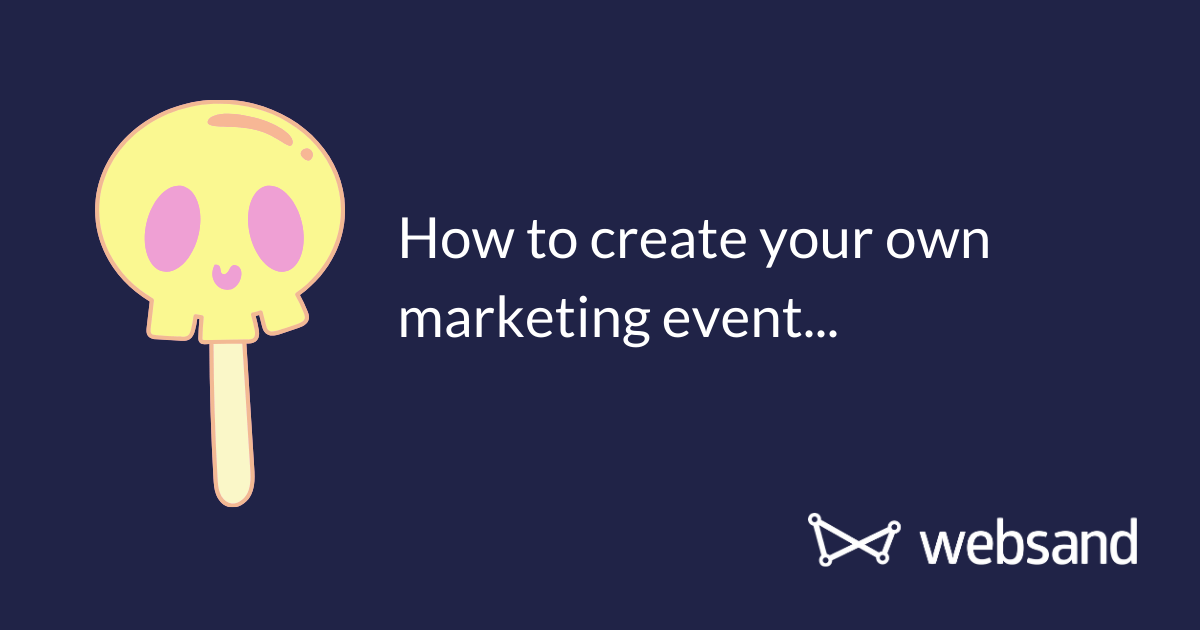Halloween is a made up marketing event
I remember, remember the 5th November.
When I was growing up, Guy Fawkes night was something to look forward to, it was a community event. Collecting wood for the bonfire, making the guy, collecting pocket money ‘penny for the guy’, buying the fireworks and then the big event, Bonfire Night, the 5th November.
Halloween was a warm up for Guy Fawkes night. It usually mean’t a hollowed out turnip, the occasional party (if it was someone’s birthday) and a few spooky stories.
That was a long time ago. Now it’s trick or treat all the way, and I doubt Guy Fawkes will even get a mention this year.
In marketing terms, the ‘Guy Fawkes night’ brand has been overtaken by the commercial power of ‘Trick or Treat’.
Halloween has become a marketing ‘event’, a scary version of Valentines Day. And with good reason, it’s now worth over $9 billion in the US alone according to the US retail federation
The main reason is that it gives marketers an easy way to create a story with relevance and another reason to communicate with their customers.
A recent favourite was the supermarket promoting a special deal on ‘spirits’. It makes the marketing relevant as everyone knows it’s Halloween, so it’s easy to get the timing right.
The importance of storytelling
I recall a debate when I was part of the DMA email council about about whether data was more important than creative in creating an effective email marketing campaign?
My view on this is that both have equal importance. They need to support each other, the story needs the audience (via data) and the data often helps to create the brief for the story (i.e. we’ve found customers that only buy product X, let’s tell them about product Y)
Although we are in an information driven age, it’s the stories that we tell that remain the key element of engagement.
Storytelling and content marketing is becoming increasingly important to build your business and brand.
However, the stories need to be targeted to someone. So using the data you hold to communicate your stories to the most appropriate audience is just as important as the story itself.
If you don’t stand for something – you stand for nothing. If you don’t focus your appeal to someone then you’ll appeal to no-one.
Which brings me to a recent trip to Barter Books…
Building your marketing story
I took my son to Barter Books in Alnwick recently. You might not have heard about them. They are a unique business. They recycle and resell books.
You take books to them and they give you credit to use against the books they have in stock.
It was founded in 1991, yet the place drips of history, and has the feel of a Harry Potter film.
It’s in an old railway station – its huge – packed full of old books, little snugs, open fireplaces, honour boxes for coffee and a very manual way of dealing with data. Index cards!
I’m not sure if they always did things this way, but it looks like they manage their customers rather than the stock. The stock moves so fast it would be really difficult to index and keep up. So they don’t.
They will pick out the gems, the valuable books they know make a difference – the ‘Flyfishing by J.R. Hartley’ type books, and index those so the book seekers can find them out online in the old school Barter Books database.
As for the others, they go into the whirlwind of stock. Coming in and getting priced or getting bought and going out.
Another reason to mention Barter Books is they found one of the most popular ‘brands’ in recent memory. ‘Keep Calm and Carry On’.
It’s quite a story… watch the video below.
Hopefully you’ll find it inspiring to create your own stories.
Creating your own ‘event’ marketing
Just as Halloween has been created as a marketing event on the marketing event calendar. You have the power to create your own marketing event every day with some customer based marketing.
In terms of planning, we think that marketing can be split into two types.
Calendar based marketing
The traditional marketing plan. This is marketing that is created by the business. It’s typically based around the following areas.
Universally recognised events – Xmas, Easter, Valentines, Halloween, Back to School.
Niche events recognised and relevant to your audience – Rugby World Cup, No Email Day, National Chinese Almond Cookie Day
Company events – new product launches, product promotions, company birthday.
Customer based marketing
Customer based marketing is based around the position of the customer within their relationship with your business. Building marketing events around your customer journey.
Based on the following areas.
- Nurture – prospective customers that haven’t bought from you yet.
- Welcome – first time customers (this tends to be a real area of opportunity for e-commerce stores, on average 80% of customers only purchase from you once)
- Hello again – second time customers
- Come back – customers that haven’t bought for a while
- VIP – customers that really power your business.
The customers within your business move around these groups all the time, so this gives you a reason – a marketing event with relevance – to communicate with these customers on a one-to-one basis and create new opportunities.
We’ve found clients that adopt this process get an uplift of engagement by at least 50%.
You don’t need to decide to do one or the other. You can do both. Both customer based and calendar based marketing feed into each other and make telling your story that little bit easier.
Need help with email marketing, we are standing by
Need help bringing your customer journey to life or creating your own marketing events, book a call on the calendar below.
